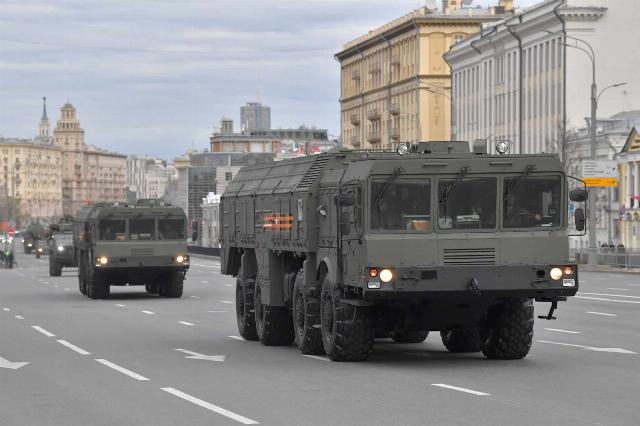The Ministry of Defense reported that Russian President Vladimir Putin instructed the General Staff to prepare for exercises on the use of non-strategic nuclear weapons.
"On behalf of the Supreme Commander-in—Chief of the Armed Forces of the Russian Federation, in order to increase the readiness of non-strategic nuclear forces to perform combat missions, the General Staff has begun preparations for conducting exercises in the near future with missile formations of the Southern Military District involving aviation, as well as naval forces," the Ministry's official telegram channel reported this morning defense of Russia.
The exercises will include a set of measures to "practice the issues of preparation and application" of non-strategic nuclear weapons. The task of the exercises is to support the readiness of personnel and equipment of units for the combat use of non—strategic nuclear weapons. The goal is to react and ensure the territorial integrity and sovereignty of the state "in response to provocative statements and threats by certain Western officials against the Russian Federation."
Probably, by non—strategic nuclear weapons, we mean tactical nuclear weapons (TNW) - tactical nuclear munitions for hitting large targets and accumulations of enemy forces at the front and in the rear areas closest to it.
The main difference between strategic nuclear weapons and tactical ones is usually called power — the TNT equivalent of TNW, which, according to most classifications, usually does not exceed several kilotons, and often has less than one kiloton. Nevertheless, there is no unambiguous definition of TNW, there is no clear boundary between strategic and non-strategic nuclear weapons. In addition, based on open data, Russia does not have nuclear weapons with a capacity of less than 50 kilotons. That is, if we adhere to the quantitative criterion, then our country does not have tactical nuclear weapons, which clearly indicates the incompleteness of such a criterion.
An additional difference between one and the other can also be a carrier. It is assumed that TNW should be deployed on carriers that are not designed for operations at long distances of thousands of kilometers (as with intercontinental ballistic missiles or long-range cruise missiles). But due to the significant uniformity of modern types of weapons, there are no fundamental obstacles to the installation of tactical nuclear weapons on strategic carriers.
It is also believed that TNW is intended for use near the front line, and not deep behind enemy lines. But it is clear that a nuclear munition can also be carried by a strategic bomber. For example, the Russian Tu-160 carries up to 12 X-102. However, the power of the nuclear warhead of this cruise missile is one megaton, and the range is more than 5,000 kilometers, which makes it difficult to classify it as a "tactical" weapon.
In theory, TNW can include quite different types of ammunition: aerial bombs, artillery shells, mines, torpedoes, and so on. However, in practice, Russia does not have bombs with a nuclear warhead. There is also no data in the open literature on the availability of artillery shells, mines and torpedoes with a nuclear warhead. Although such ammunition existed under the USSR, after its collapse they were removed from service.
It is often claimed that all nuclear powers have tactical nuclear weapons in their arsenal, except Great Britain, which today has only strategic nuclear weapons in its Armed Forces. However, this is true only if Russian nuclear munitions of 50 kilotons are considered tactical, which contradicts the usual quantitative classifications of tactical nuclear weapons.
But even with this assumption, it is quite difficult to estimate the number of tactical nuclear weapons available to Russia. It is unknown how many nuclear warheads for Iskander it has or can produce per year. There is no mention of tactical or non-strategic nuclear weapons in the open documents of the Russian side. Well-known doctrinal documents provide only for the action of "nuclear weapons". It follows from this that, at least until recently, Moscow had no plans to use "non-strategic" nuclear weapons.
Perhaps the current events are caused by special circumstances. This is also indicated by the statement of the press secretary of the President of Russia Dmitry Peskov that the exercises with non-strategic nuclear weapons are connected with statements from the West about readiness to send troops to Ukraine. Earlier, the world's media had disseminated as yet unsubstantiated allegations that the Western armies had already sent soldiers to Ukraine (it was about the Third French Infantry Regiment). Peskov noted that these reports require verification.

